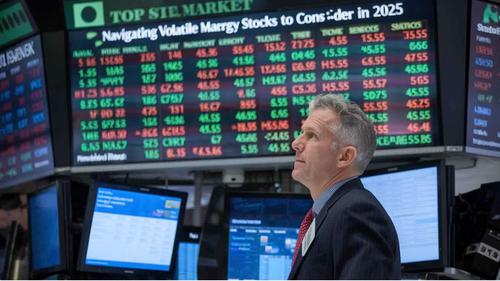MarketLens
Defensive Sectors: How to Protect Your Portfolio in Volatile Markets
Historical Performance of Defensive Sectors
Resilience During Market Downturns
Defensive sectors have consistently outperformed the broader market during periods of economic stress. Historical data indicates that sectors such as consumer staples, utilities, and healthcare exhibit lower volatility and better relative performance during negative market cycles and recessions. For instance, during the Dot-com Bubble and the Global Financial Crisis, these sectors provided a buffer against significant market declines.
Case Studies of Market Downturns
An analysis of four historical market downturns reveals that combining investments in the Information Technology (IT) sector with defensive sectors would have produced better average returns than IT alone. This is particularly evident during the Dot-com Bubble and the Global Financial Crisis, where defensive sectors mitigated losses and provided stability. The barbell strategy, which involves a 50/50 portfolio of IT and a defensive sector, has proven effective in reducing average volatility and enhancing diversification.
Defensive Tools and Strategies
Diversification and Defensive Assets
Diversification remains a cornerstone strategy for mitigating risks during turbulent times. Defensive assets such as gold and US Treasuries are highlighted for their historical performance during periods of increased volatility. Gold, often considered a safe haven, outperforms during volatile periods, providing enhanced diversification. Similarly, US Treasuries, backed by the US government, offer capital preservation and stability, acting as a defensive ballast during market downturns.
Equity Strategies
Equity strategies such as covered calls and low volatility equities are also effective in protecting portfolios. Covered call strategies allow investors to monetize market volatility by writing call options, generating income and providing a buffer during downturns. Low volatility equities, focusing on income-oriented stocks in defensive sectors like utilities, consumer staples, energy, and healthcare, have historically performed well during volatile periods.
Analyst Recommendations for Defensive Stocks
Consumer Staples
Consumer staples are a cornerstone of defensive investing due to their provision of essential goods and services that maintain demand even in challenging economic conditions. Analysts recommend several key stocks within this sector:
- Procter & Gamble (NYSE: PG)
- Dividend Yield: 2.29%
- Annual Dividend: $4.03
- Dividend Increase Track Record: 69 years
- 3-Year Dividend Growth: 6.21%
- Payout Ratio: 65.85%
- Market Rank: 4.12/5 stars
- Current Price: $176.07
- Colgate-Palmolive Company (NYSE: CL)
- Number of Hedge Fund Holders: 52
- Q2 2024 Net Sales: $5.06 billion (up 4.9% YoY)
- Full-Year Net Sales Growth: 2% to 5%
- Significant International Presence: 70% of revenue from outside the U.S.
- PepsiCo, Inc. (NASDAQ: PEP)
- Number of Hedge Fund Holders: 65
- Q2 2024 Organic Revenue Growth: 2.3%
- Earnings Per Share Increase: 8%
- Shareholder Returns: $8.2 billion by end of 2024
- 12-Month Median Price Target: $183 (3% upside)
Utilities
Utilities are another key defensive sector, providing essential services such as electricity and water, which remain in demand regardless of economic conditions. Key stocks in this sector include:
- NextEra Energy (NYSE: NEE)
- Dividend Yield: 2.54%
- Annual Dividend: $2.06
- Dividend Increase Track Record: 30 years
- 3-Year Dividend Growth: 10.13%
- Payout Ratio: 56.13%
- Market Rank: 4.72/5 stars
- Current Price: $81.18
- Southern Company (NYSE: SO)
- Dividend Yield: 3.6%
- Annual Earnings Growth: At least 6% this year
- Notable Stocks: Duke Energy (DUK.US), Sempra Energy (SRE.US)
Healthcare
The healthcare sector is resilient due to the non-discretionary nature of healthcare spending. Key stocks in this sector include:
- Johnson & Johnson (NYSE: JNJ)
- Dividend Yield: 2.98%
- Annual Dividend: $4.96
- Dividend Increase Track Record: 63 years
- 3-Year Dividend Growth: 5.70%
- Payout Ratio: 30.92%
- Market Rank: 4.55/5 stars
- Current Price: $166.61
- Pfizer (NYSE: PFE)
- Essential Pharmaceuticals and Vaccines
- Stable Demand
- UnitedHealth Group (NYSE: UNH)
- Various Health Services
- Essential During Recessions
Real Estate
Real estate, particularly Real Estate Investment Trusts (REITs), offers stability and income through dividends. Key ETFs in this sector include:
- Vanguard Real Estate ETF (VNQ)
- 52-Week High: $95.50
- Assets Under Management (AUM): $37.1 billion
- Diversified Holdings: Retail, telecom tower, and industrial REITs
- Real Estate Select Sector SPDR Fund (XLRE)
- Current Price: $44.15
- Dividend Yield: 3.10%
- Focus: REITs and real estate stocks, including Prologis and American Tower
Market Context and Sentiment
Recent Market Trends
The recent market trends underscore the importance of defensive sectors. In September 2024, the S&P 500 experienced a pullback of about 4%, but defensive sectors such as consumer staples and utilities outperformed, highlighting their resilience during economic slowdowns. The volatility index (VIX) recorded significant intraday spikes, reaching levels not seen since the COVID-19 pandemic and the 2008/09 Global Financial Crisis, indicating a return of volatility after a period of calm in 2023 and early 2024.
Federal Reserve Policies
The Federal Reserve’s preparedness to cut rates further supports the performance of interest rate-sensitive sectors. Sectors like healthcare and consumer staples are expected to grow into 2025, contributing to their attractiveness during volatile market conditions. This environment can further bolster defensive sectors, making them a strategic choice for investors looking to mitigate risks associated with market volatility.
Conclusion
Defensive sectors have proven to be effective in shielding investment portfolios during volatile times. Historical performance, diversification strategies, and specific stock recommendations by analysts underscore the resilience and stability offered by sectors such as consumer staples, utilities, healthcare, and real estate. By incorporating these defensive tools and strategies, investors can effectively protect their portfolios against market volatility and economic downturns.
Key Takeaways
- Historical Performance: Defensive sectors have consistently outperformed during market downturns, providing stability and lower volatility.
- Diversification: Incorporating defensive assets like gold, US Treasuries, and low volatility equities can enhance portfolio resilience.
- Analyst Recommendations: Key stocks in defensive sectors, such as Procter & Gamble, Johnson & Johnson, and NextEra Energy, are highlighted for their stability and growth potential.
- Market Context: Recent market trends and Federal Reserve policies further support the attractiveness of defensive sectors.
- Strategic Choice: Defensive sectors offer a buffer against potential losses and mitigate the impacts of market corrections, making them a prudent choice for risk-averse investors.
In conclusion, defensive sectors play a crucial role in maintaining portfolio stability during volatile times. By focusing on these sectors and incorporating recommended stocks, investors can navigate economic uncertainties and protect their investments from significant declines.
Related Articles
Category
You may also like
No related articles available
Breaking News
View All →No topics available at the moment






